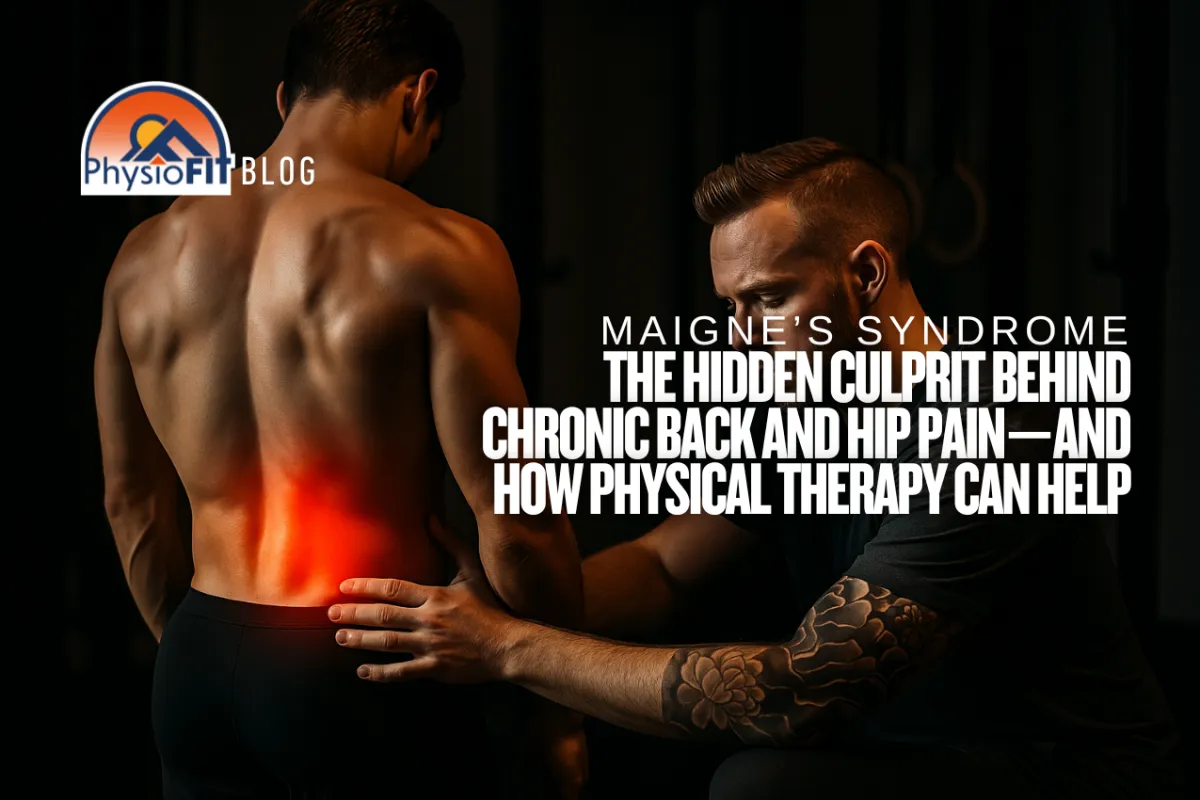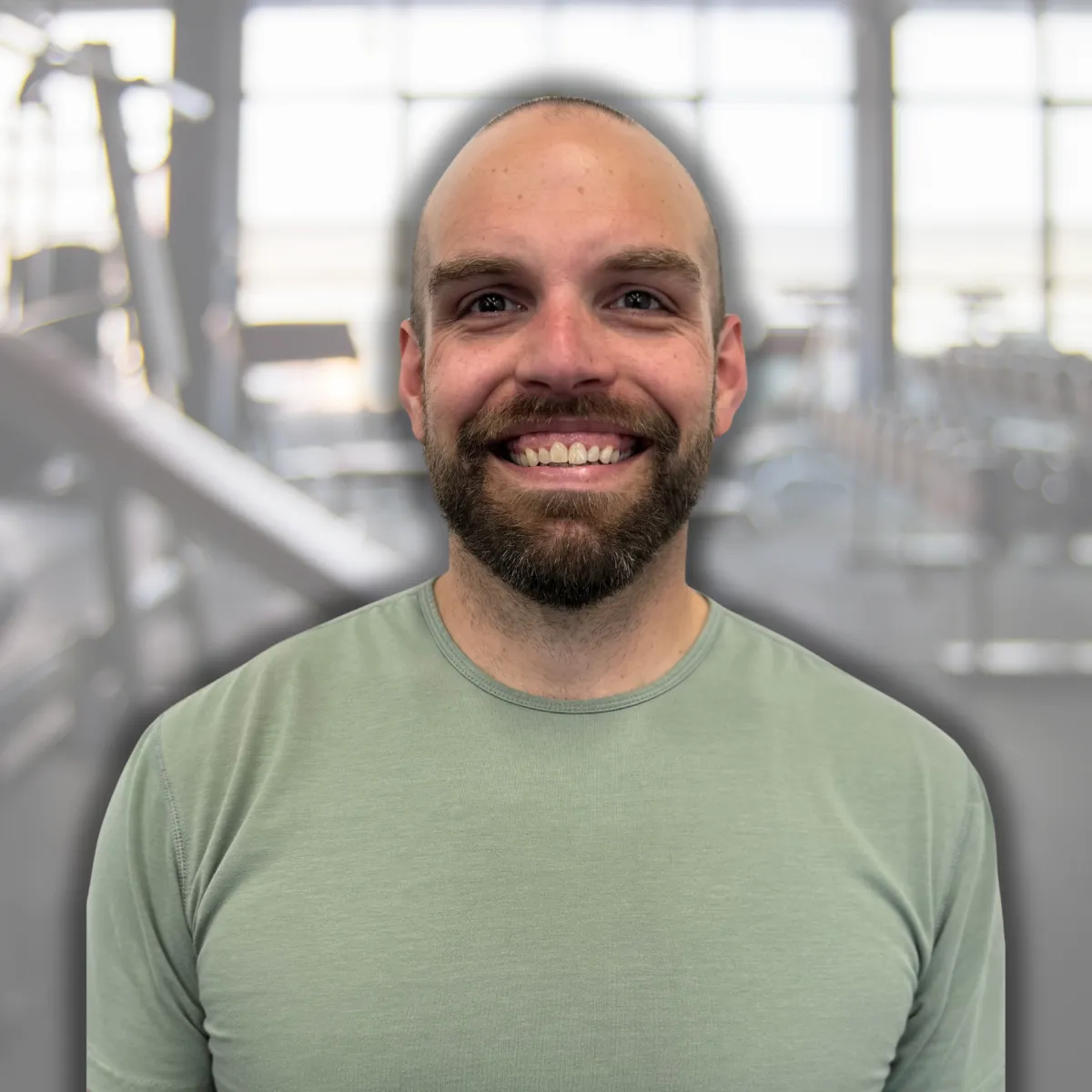We use cookies to improve your experience on our site. By using our site, you consent to the use of cookies. Rejecting cookies will prevent non-essential cookies from loading.
Your Source for All Things Physical Therapy in Bend Oregon
The PhysioBLOG
Here, we share informative articles and insights that aim to help you achieve your full potential through our fitness-focused approach to rehabilitation. Our team is dedicated to providing you with valuable tips and techniques that can help you overcome any obstacle, whether you're recovering from an injury, surgery, or striving to build strength and wellness for life.
Stay up-to-date with our latest posts & empower yourself with elegantly simple techniques for optimal health & wellness.

Maigne’s Syndrome: The Hidden Culprit Behind Chronic Back and Hip Pain—And How Physical Therapy Can Help
If you’re an athlete, weightlifter, or cyclist struggling with persistent lower back, hip, or groin pain, you might be caught in an endless cycle of frustration—stretching, foam rolling, and even resting, only to have the pain return once you resume training.
What if I told you the problem isn’t in your hip flexors, glutes, or lumbar spine—but rather in a part of your back you might have never considered?
Enter Maigne’s Syndrome—a condition that stems from dysfunction at the thoracolumbar junction (T12-L2), where the upper and lower spine meet. It’s often misdiagnosed as sciatica, a hip impingement, or even a hernia, leaving many athletes and active individuals chasing ineffective treatments.
But here’s the good news: with targeted physical therapy interventions, you can fix the underlying issue and get back to training pain-free. Let’s dive in.
What is Maigne’s Syndrome?
Maigne’s Syndrome, also known as thoracolumbar junction syndrome, occurs when the nerves at T12-L2 become irritated, compressed, or dysfunctional. These nerves supply sensation to the lower back, hips, groin, and upper thigh, meaning that irritation here can refer pain downwards, often misleading both athletes and clinicians.
Unlike disc herniations or true nerve root compressions, Maigne’s Syndrome is a mechanical dysfunction—meaning that restricted movement, muscle imbalances, or poor biomechanics can be the root cause.
How Common Movements Can Trigger Maigne’s Syndrome
If you’re an athlete, certain movement patterns can overload the thoracolumbar junction, leading to irritation and pain over time. Here’s how it happens:
1. Barbell Deadlifts & Kettlebell Swings: Overloading the Hinge Pattern
The Issue: Heavy deadlifts and kettlebell swings require a strong hip hinge. If your thoracolumbar junction lacks mobility, your body compensates by hyperextending the lower back or overusing the lumbar erectors—stressing the nerves at T12-L2.
How It Presents: Pain that mimics a lumbar strain, SI joint dysfunction, or a deep hip ache.
2. Snatching & Overhead Lifts: Unstable Spinal Extension
The Issue: When snatching or jerking a barbell overhead, a lack of thoracic extension forces the thoracolumbar junction to compensate, causing excessive stress.
How It Presents: Localized low back tightness, hip tightness, or even discomfort in the groin after lifting.
3. Cycling: Repetitive Lumbar Flexion and Poor Pelvic Positioning
The Issue: Long hours on the bike, especially in an aggressive forward-leaning position, place the thoracolumbar junction in prolonged flexion, irritating the nerves.
How It Presents: A dull ache in the lower back, groin discomfort, and even hip flexor tightness that never fully resolves.
4. Sitting for Work, Then Training Hard
The Issue: If you spend hours sitting at a desk and then go straight into heavy training without properly mobilizing the thoracolumbar spine, the area remains stiff and prone to irritation.
How It Presents: Pain that worsens after long periods of sitting but also flares up after intense workouts.
How Physical Therapy Can Help: A Targeted Approach
1. Restoring Thoracolumbar Mobility
One of the biggest overlooked factors in treating Maigne’s Syndrome is improving mobility at the thoracolumbar junction itself. If this area is locked up, the lumbar spine and pelvis compensate, leading to dysfunction.
✅ Intervention:
Segmental Cat-Camel: Focus on articulating movement through the T12-L2 area.
Foam Rolling + Mobilization: Thoracolumbar junction extensions using a foam roller to retrain spinal movement.
Quadruped T-Spine Rotations: Improve mobility in the mid-back, reducing compensation at T12-L2.
2. Strengthening the Deep Core for Stability
If the thoracolumbar junction is unstable, the surrounding muscles (like the QL, erectors, and psoas) become overactive, creating pain and dysfunction. The key? Strengthening the deep core while avoiding excessive spinal compensation.
✅ Intervention:
Dead Bug Variations: Ensure the pelvis and ribs stay neutral, avoiding overuse of the low back.
Pallof Press (Half-Kneeling or Standing): Anti-rotation core work to stabilize the thoracolumbar junction.
Bird Dogs with Controlled Reach: Focus on maintaining neutral spine control through movement.
3. Addressing Pelvic Alignment and Hip Function
Since the nerves from T12-L2 influence the hip flexors and adductors, dysfunction at this level can create tight, overactive hip flexors and inhibited glutes—which worsens the cycle of pain.
✅ Intervention:
90/90 Hip Lift with Breathing: Helps reset pelvic position and reduce anterior pelvic tilt.
Side-Lying Hip Clamshells & Glute Bridges: Activate the posterior chain without lumbar compensation.
Copenhagen Planks: Strengthen the adductors, which can become weak due to nerve dysfunction at T12-L2.
4. Retraining Posture & Movement Patterns
If you don’t fix the way you move, the pain will keep returning.
✅ Intervention:
Cueing a Neutral Rib Position During Lifts: Avoid excessive spinal extension at lockout in deadlifts, snatches, or presses.
Hip Hinge Patterning Drills: Teach proper mechanics so that the thoracolumbar junction isn’t compensating.
Ergonomic Adjustments for Cyclists: Ensure proper saddle height and posture to reduce stress on the junction.
The Bottom Line: A Smarter Approach to Fixing Your Pain
Maigne’s Syndrome is one of the most overlooked causes of chronic low back, hip, and groin pain, especially in athletes who deadlift, swing kettlebells, snatch, or cycle. If left unaddressed, it leads to frustrating compensation patterns, limiting performance and quality of life.
The good news? Physical therapy can resolve it—but only if treatment is focused on restoring thoracolumbar mobility, improving core stability, optimizing hip function, and retraining movement patterns.
If you’ve been struggling with lingering back or hip pain that never quite resolves, consider working with a physical therapist who understands Maigne’s Syndrome and its biomechanical implications. With the right approach, you can eliminate pain at its source and get back to training stronger than ever.

PhysioFIT
PhysioBlog
Ask The Experts
Get In Touch
Email: info@physiofitbend.com
Hours
Mon – Thurs - 7:00am – 7:00pm
Fri - 7:00am – 1:00pm
Saturday - Sunday – CLOSED
Phone Number:
(541) 797-5800
Copyright PhysioFIT 2025 . All Rights Reserved




